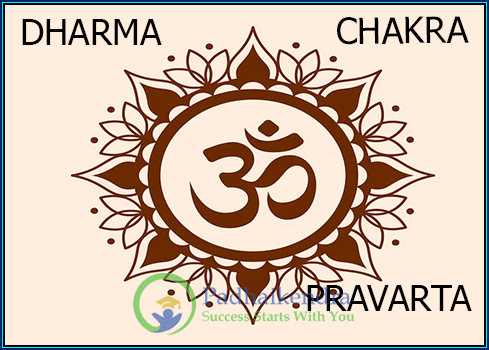Meaning of the term Dharma-Chakra-Pravartana used during ancient India
Dharma-Chakra-Pravartana is a term used in ancient India that refers to the first teaching of Gautama Buddha, also known as the Buddha’s First Sermon. The term “Dharma-Chakra-Pravartana” is derived from the Sanskrit words “Dharma,” which means “truth” or “law,” “Chakra,” which means “wheel,” and “Pravartana,” which means “turning.”
According to Buddhist tradition, after achieving enlightenment, the Buddha traveled to the city of Sarnath in northern India, where he gave his first teaching to a group of five ascetics. This teaching became known as the Dharma-Chakra-Pravartana or the “Turning of the Wheel of Dharma.”
In his first teaching, the Buddha outlined the Four Noble Truths, which form the foundation of Buddhist philosophy. These truths are:
- The truth of suffering (dukkha)
- The truth of the cause of suffering (samudaya)
- The truth of the cessation of suffering (nirodha)
- The truth of the path leading to the cessation of suffering (magga)
The Buddha also emphasized the importance of the Noble Eightfold Path, which is a set of ethical and mental guidelines that Buddhists should follow in order to achieve enlightenment.
The term “Dharma-Chakra-Pravartana” is often used to refer to the Buddha’s role as a teacher and spiritual guide, as well as to the beginning of the Buddhist tradition. The image of the wheel (Chakra) represents the cycle of birth and rebirth, which is central to Buddhist teachings.
The Dharma-Chakra-Pravartana continues to be an important part of Buddhist tradition and is commemorated each year by Buddhists around the world. The teachings of the Buddha have had a profound impact on Indian philosophy and religious thought, and continue to be studied and practised by millions of people today.

